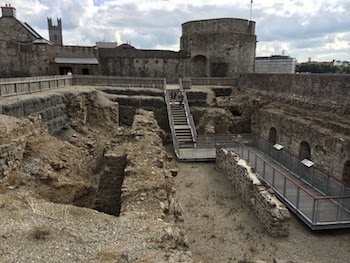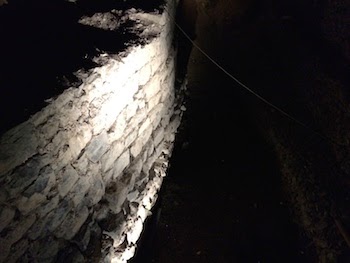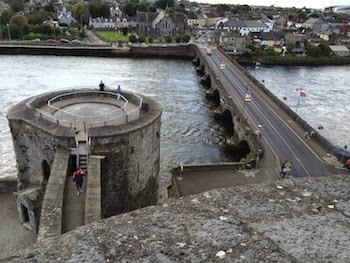Our homebase in the west of Ireland was a tiny little village called Silvermines, just south of the only slightly larger town of Nenagh (“Knee-nuh”), both of which are forty minutes or so east of Limerick. It’s the fairly bustling city that bears the name of the style of poetry we all had to learn in junior high…the same that often is put to wicked use. One of my favorites:
But this blog isn’t about cows, Limerick, or even Silvermines (I’ll have to blog about it soon), it’s actually about one of two fine castles visitors can pick from in Limerick: King John’s Castle. The other is Bunratty, but we didn’t visit that one: we simply had to pick one or the other and we saved Bunratty for next time.
King John’s Castle is named for the same King John famous in the Robin Hood stories. He ordered its construction in 1200. Its first edition was completed in 1210, but it was built on top of a Viking fortress that dated from the early 900’s, and naturally additions and alterations continued for centuries after its initial completion.
Through its life, the castle has stood watch over Limerick and the River Shannon. The most significant military action it saw was the Siege of Limerick in 1642, one of the Irish people’s first violent uprisings in a three-century struggle for independence. The siege of the castle took months and was an example of subterranean warfare: mines were dug to undermine the castle walls, and countermines were dug by the defenders to attack the miners and collapse their mines.
Today, King John’s Castle is well-preserved and houses a fine, if a bit over-informative, museum. By over-informative, I mean that it’s easy to spend three hours in the exhibit space and only an hour in the actual castle. If you visit, focus on the displays concerning the siege and check out the models of how the city of Limerick used to look. Once in the castle, don’t miss the underground excavations or the commanding view of the river and modern Limerick from the two towers in the main keep.









